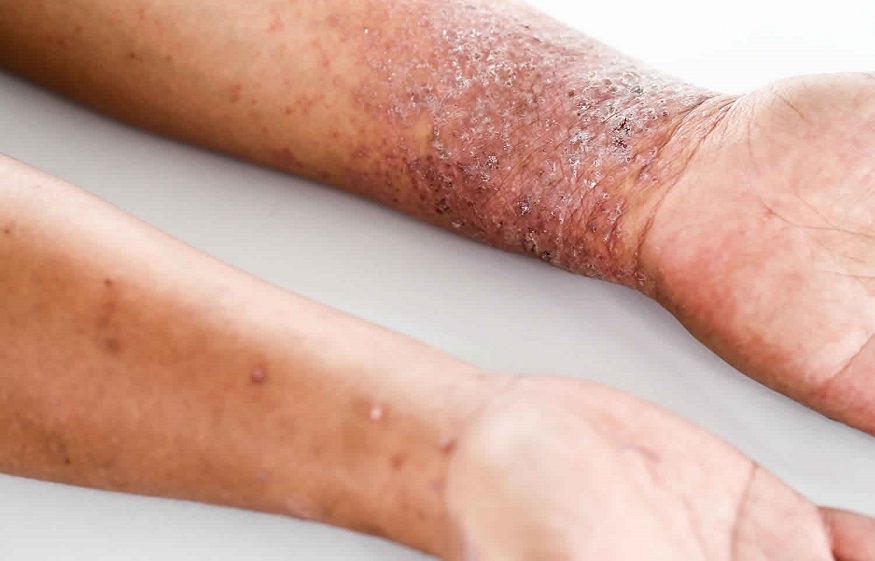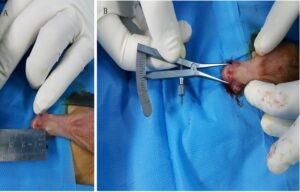Treatments Of Atopic dermatitis The diagnosis

Atopic dermatitis may be diagnosed without the use of a lab examination (eczema). Your doctor will most certainly diagnose you based on examining your skin and a study of your medical records. He or she may also use patch testing or other tests to rule out other skin disorders or diagnose eczema-related conditions.
Tell your doctor if you think a particular food induced your child’s rash and inquire about detecting possible food allergies and if you think a certain food-induced your child’s rash and inquire for detecting possible food allergies.
Treatments
Atopic dermatitis will last a long time. To monitor it, you can need to try a variety of therapies over months or years. Even if therapy is effective, symptoms and signs can reappear (flare).
It’s important to recognize the problem early on so that treatment can begin. If routine moisturizing and other self-care measures fail to relieve your symptoms, your doctor can recommend one or more of the following treatments:
Prescription drugs
- Eczema creams relieve scratching and aid in skin recovery. Your doctor can recommend corticosteroid cream or ointment. After moisturizing, apply it as instructed. Overuse of this drug can result in side effects such as skin thinning. Some creams, such as tacrolimus (Protopic) and pimecrolimus (Elidel), contain calcineurin inhibitors, damaging the immune system. People over the age of 2 will use them to regulate their skin reaction better. After moisturizing, apply it as instructed. When using these goods, keep them out of direct sunshine. There is a black box notice on these medications on the possibility of cancer. The American Academy of Allergy, Asthma, and Immunology, on the other hand, has found that the risk-to-benefit ratios of topical pimecrolimus and tacrolimus are comparable to those of most other traditional therapies for chronic eczema and that the literature does not justify the use of the black box alert.
- Infection-fighting drugs If you have a bacterial infection, an open sore, or cracks on your skin, your doctor may recommend an antibiotic cream. To treat an infection, he or she may suggest taking oral antibiotics for a short period.
- Anti-inflammatory medications are taken orally. Your doctor can recommend oral corticosteroids, such as prednisone, in more serious cases. These medications are successful, but they can’t be used forever due to the possibility of severe side effects.
- For extreme eczema, a newer alternative is available. Dupilumab is a novel injectable biologic (monoclonal antibody) that was recently approved by the Food and Drug Administration (FDA) (Dupixent). It’s used to help patients who have a serious illness who aren’t responding well to any treatments. Since this is a recent drug, it does not have a long track record of efficacy. It has been shown in studies to be healthy when used as a guide. It is very costly.
Treatments
- Wet dressings. Wrapping the affected region with topical corticosteroids and wet bandages is an appropriate, intensive treatment for serious atopic dermatitis. Since it is labour intensive and needs nursing skills, this is often performed in a hospital with widespread lesions. Alternatively, check with your doctor about learning how to execute this procedure at home.
- Light therapy is a procedure that requires the use of light. This therapy is for patients who don’t respond to topical medications or flare up again quickly after treatment. Phototherapy, the most basic type of light therapy, includes exposing the skin to regulated concentrations of natural sunlight. Artificial ultraviolet A (UVA) and narrowband ultraviolet B (UVB) are used in other ways, either alone or in combination with drugs. Long-term light therapy, while effective, has negative side effects such as premature skin ageing and an elevated risk of skin cancer. Phototherapy is less widely used in young children and is not provided to babies for these reasons. Discuss the positives and risks of light therapy with your psychiatrist.
- Counselling is a service that helps others. People who are humiliated or irritated by their skin condition may benefit from communicating with a therapist or other counsellor. Biofeedback, relaxation, and behaviour change People who scratch often can benefit from these methods.








